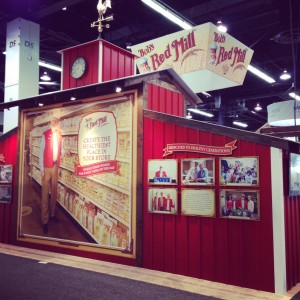We all have stories – narratives that we can use to let people know who we are and what we stand for.
In the recent US presidential election, it was truly a battle of narratives. One side was viewed as a stable, dependable candidate albeit having been painted as crooked for decades by the other side. The other candidate was viewed as an outsider looking to ‘drain the swamp,’ but was painted by the other side as vulgar, unpredictable and unstable.
We all know how the election turned out. But what’s interesting is that no matter how much fact-checking came into play by countless individuals and entities, that the narrative of each side was what mattered most. We tend to believe what we want to, and if the story that’s depicted resonates with us, we’ll be moved by it.

It’s the same with tradeshow marketing. I have a number of clients in the natural products industry, and each company endeavors to tell a specific story using images, colors, graphics and messaging as part of an exhibit. Each company backs that up with products that continue that story and personnel that believe in the narrative. If there is a weak link in the chain, the dissonance will be felt, even if it isn’t clearly seen or understood.
That’s why, when crafting your tradeshow marketing narrative, all elements are important. Think of it: you’re under the microscope in a location where dozens if not hundreds of direct competitors are being examined as well. Every little thing contributes to the overall perception of your product and company: your employees, the clothes they wear, how they present themselves; the graphics, messaging, images, colors, booth construction materials, the flooring – are all communicating a distinct message. And if your story or narrative is not fully understood by the people designing the booth and creating the graphics, there is a good chance that the message will be garbled.
From the whole grains company to the bread company to the natural deodorant company to the men’s hygiene products company, they are all working to tell their story so that it’s easily understood, that it’s intuitively inferred by visitors.
Smarter people that me have the knowledge to craft those stories based on their knowledge of images, colors, messaging and so on and how people absorb those messages. The top companies in any industry are the ones that do the best job of depicting a narrative that fully and simply tells the story that they intend to tell.

